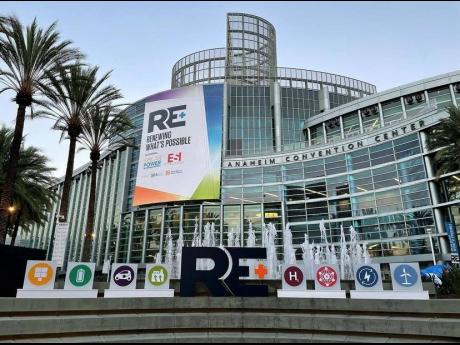Protect clean energy assets from fires, expert warns
Anaheim, California:
As the clean energy landscape around the world changes, countries are being encouraged to invest in suppression systems to guard against the impact of fires.
Engineering Manager at Firetrace International Brian Cashion argued that while fires in the clean energy space are rare, they still occur and can be a catastrophic and costly event.
According to the US Fire Administration, between 2015 and 2018, there were 155 fires caused by solar installations, with 84 being residential systems and 71 being non-residential.
The demand for clean energy is driving record installations of clean energy generation capacity and by 2026, global renewable electricity capacity is forecast to rise more than 60 per cent from 2020 levels to over 4,800 gigawatts - equivalent to the current total global power capacity of fossil fuels and nuclear combined.
With the passage of the Inflation Reduction Act (IRA), he reasoned that that capacity is likely to increase even further.
“Statistics dictate that an increase in install base has a direct correlation to an increased risk of fires in clean energy assets. This is in addition to existing and ageing clean energy infrastructure that could also be at high risk of fire. Estimates have put fires in wind turbines from 1 in 2,000 to 1 in 15,000 per year,” Cashion said during an educational session at North America’s largest renewable energy event, RE+, on Tuesday, September 22.
Cashion explained that there are a number of contributing factors to clean energy fires such as climate change, drought, wildfires, new unvetted technologies, ageing infrastructure, placement near communities or in remote locations, and the absence of universally mandated fire mitigation methods or requirements.
The primary implication of clean energy asset fires are devastation of property, and the total cost of a wind turbine fire is estimated at US$8 million to US$9 million and covers fire investigations, decommissioning and removal of turbine, rebuilding and recommissioning, as well as lost revenues.
A photovoltaic solar panel fire is estimated at US$250,000, which includes fire investigation, replacement of inverters and damaged infrastructure, and lost revenue from downtime.
Cashion added that there is also the risk of fire spreading to neighbouring communities or causing a wildfire.
“Everyone involved suffers some reputational damage. From the original equipment manufacturer, owner, operator, and the industry as a whole. Reports of fires in clean energy assets fuel the anti-clean energy movement and the spread of misinformation,” he said.
When asked if developing countries are more vulnerable to clean energy fires, Cashion said there are no statistics that point to that, but explained that the quality of workmanship is a factor.
“Also, the regulations can differ between more developed and less developed countries. Regulations really help drive the safety of the equipment and are definitely an important aspect in mitigating fires,” Cashion said.
Firetrace specialises in designing and building automatic fire suppression systems for high-risk equipment like wind turbines.
Global Business Development Manager Ross Paznokas told The Gleaner that fire suppression systems are critical in both developed and developing countries.
“It’s the same loss for a small country as for maybe the United States, but the United States doesn’t go completely without power if there is no electricity. If some energy assets – wind, solar or battery storage – burns, they are out of commission and they can be a substantially larger part of what that country needs in order to stay viable for their citizens,” Paznokas said.
He added that he has had recent discussions with a country which has about 1,000 20-year-old turbines.
“They’ve had several fires and they want to discuss fire suppression, because no one is going to provide any additional money if they burn. Countries must protect what they have by investing in fire suppression. It shouldn’t be up to an insurance company to simply replace infrastructure,” Paznokas reasoned.
Actions to reduce fire risks in clean energy assets:
• Complete a fire risk assessment and act on any findings.
• Understand and comply with local and national fire regulations and recommendations.
• Develop a fire safety and response plan and engage with local fire services.
• Implement fire detection and suppression systems.
Benefits of mitigating fire risks in clean energy assets:
• By protecting assets with fire detection and suppression, owners minimise the risk of fire spreading and causing wildfires as well as damage to the assets.
• Quickly have assets back up and running after replacing the affected component, to minimise downtime and lost revenues.
• Decreases the likelihood of increase in insurance premiums.


